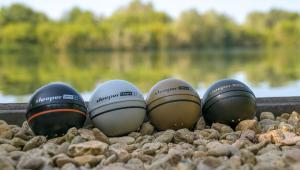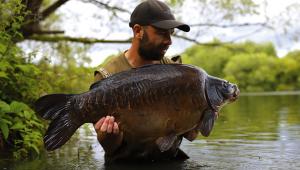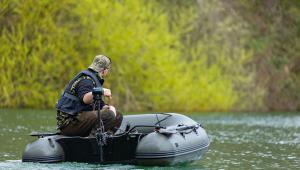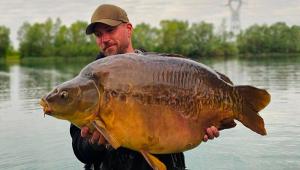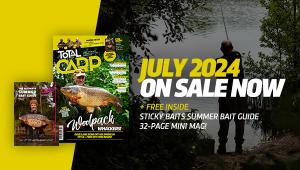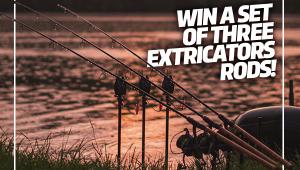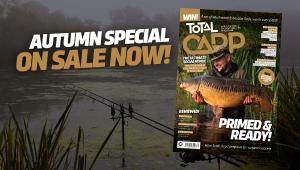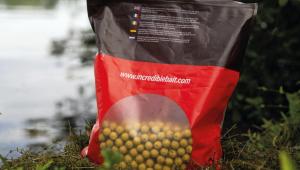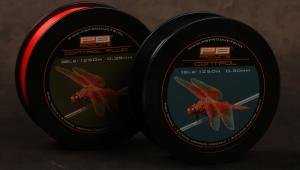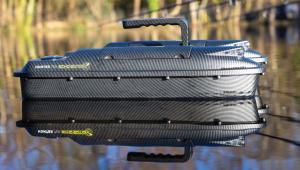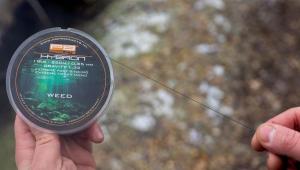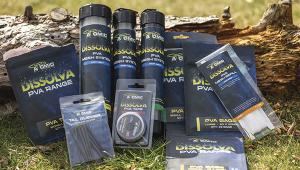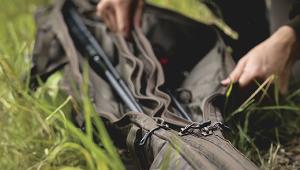WATERCRAFT & OBSERVATIONS | Oz Holness
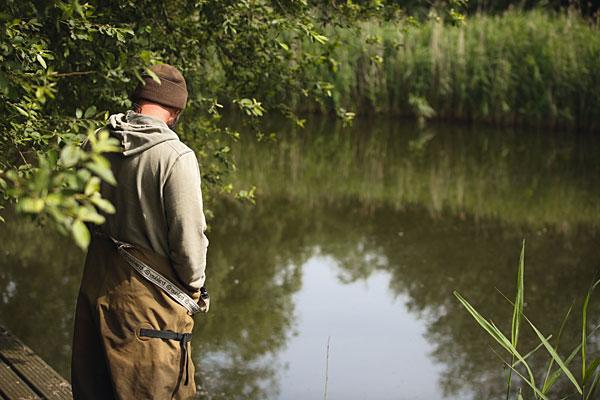
There are many different ways we learn to read the angling situations we are confronted with through the seasons, fishing for carp. This is mainly learnt over time spent at a variety of waters in all weather conditions and by observing signs from nature through all the periods of the day and night.
There are so many things we can take from this experience and once we have gained that knowledge, the pieces of the jigsaw slot together. You need to constantly be asking questions and then build the knowledge from the results you get and things you see as a basis to understand the natural world in which the carp live and survive.
Once you have a good understanding of these signs, you can react to the situations in front of you and hopefully stay one step ahead in your quest for both locating and catching these wily old carp.
As with all of these situations, there is no real right and wrong and living in a natural liquid environment with a mirror-like surface, we are often having to guess as to the whereabouts and actions of the carp as we cannot see everything that goes on, and that is a big part of the reason we do it – the unknown! But learning to read the signs goes some way to understanding what is going on beneath the surface and I have given a number of examples here as to how I go about this business in my own angling for carp over the past 30-odd years.
Wind And Weather
To begin with, we need to understand a little about the carp’s environment and how other influences may affect it, what those influences mean in terms of carp movement and feeding reactions as a result.
The carp live in a liquid world that is protected somewhat, from not only our view, but how we feel as humans; standing on the banks is completely different to how a cold-blooded fish feels in its subterranean world. So we cannot equate our personal feelings of weather and climate to the way a fish behaves. We have to learn each particular water and apply the rules as we see fit.
To explain this, a 100-acre pit exposed to the elements with predominantly shallow water will be affected by wind and temperature far quicker than a sheltered 20-acre water with depths of 20 feet plus. And so you see the need to gain that knowledge by experiencing a variety of waters and then apply the basic rules and learn to adapt to each situation.
The basic rules are that wind will have one of the biggest long-term effects on the water over the seasons that we fish. General water temperatures will gradually increase and decrease with the shift from summer to winter and the shortening of the days, but wind has a day-to-day effect on the immediate temperature as well as affecting many other factors in the lake.
The easiest way to explain is to give the age-old example of blowing across a hot cup of tea… it cools it down. On the other hand, if the wind is warmer than the temperature of the water we have an interesting and stimulatory effect on our hands.
Alongside temperature, the wind also causes movement of water, which does a number of things. First, pushing a flow across the surface, seen as ripple, and then, with increasing speed, small waves that will hit the windward bank. This then in turn causes an opposite reaction and that water begins to make a return flow and the term undertow is then used.
As a general rule of thumb, carp will react quickly to a new wind and certainly one that is warmer than the lake temperature. There are many factors that can be included in this movement of the fish, including comfort, food items being pushed in the drift and oxygen levels increasing on the end of the flow. One thing to note is that once that wind has been blowing for a few days, its effect is noticeably decreased and it’s often the time to be having a good look elsewhere.
Air Pressure
Linked to the wind and weather patterns is of course air pressure. Atmospheric pressure has a bearing on the surface of the water and is part and parcel of how our weather systems are formed. Our normal earth air pressure is from 980 (low) to 1050 millibars (high), and the difference is caused by unequal heating across the earth’s surface.
Low pressures generally bring warm air, high winds and rain; generally unsettled conditions that bring oxygenation and prime feeding conditions for the carp. High pressure generally is more settled and with clear skies, so sunny conditions in the main.
We know that pressure affects liquid and so living within a liquid world we have to realise that pressure will have an effect on the carp. Again it is very depth dependent and some lakes respond well to low pressures and some to high. As a general rule though, the low pressures will bring on longer and sustained feeding spells in a greater variety of waters.
Moon Phases
A contentious one this and again, linked closely with the weather systems. The moon has a huge effect on the earth as we know and it is a hugely technical and scientific subject. We know the moon and the spinning rotation of the Earth, plus its wobble on axis, all have a bearing on our lives, tides and anything that is made up of water. There is no doubt in my mind that various moon phases throughout the year have a distinct correlation to captures of carp, especially some of the big ones that seem to be very susceptible to capture around particular phases.
Again, too much emphasis is not required, just note that the new moons often bring low pressure systems so often associated with strong feeding responses. The full moon is often sat within a high pressure scenario; maybe the bulk of the fish being not so responsive gives rise to those big fish captures that are often around a full moon period? Who knows, it is not a scientifically proven factor, but that is part of the magic, surely!
As a rule of thumb again, if you can get a few trips in on the moon phases throughout the year, maybe the work you do in the build-up to these trips will give you the result you want with the fish you desire on these special days and nights!
Topography
Learning the lake’s underwater features early on in your campaign will always stand you in good stead in the future. The layout of bars, plateaus and a general overview of the deeper and shallower areas of the lake will enable you to make quick decisions of the areas to look in on arrival at the lake.
This information goes hand in hand with your understanding of the weather conditions, wind and water movement and air pressure. You can now see how all these things are interlinked and together form the very building blocks of watercraft.
Sheltered Bays
Alongside the obvious we have spoken about, such as the windward banks and effects of water movement, there are other features of the lake that will certainly be attractive to the carp at different times of the year. The sun has a huge effect on the water and of course this warming will be super-attractive to a cold-blooded carp.
The first thing I look for as the weather improves in the spring and the sun climbs higher in the sky are sheltered bays. These bays, if not affected by any cooling from the wind, are magnets to the carp who are looking for comfort, shelter and warmth. If they are reed lined or have snaggy margins, then all the better!
As the year progresses, these bays often get covered in a layer of surface scum and fluff, increasing the carp’s desire to slip in under the safety of this cover and enjoy the quiet environment. So these bays are always worth serious investigation.
Islands Splitting The Wind
This goes hand in hand with topography and the weather. Big natural obstructions within the lake will cause a split in wind direction and can funnel and direct the movement of carp in different directions.
Also, an island within the lake will create a new windward margin and of course a lee, so all these things have to be taken into consideration when a lake is split up with natural features. Food will gather on the prevailing windward side of islands and also there is the sun to take into consideration – which side gets the most?
Weed
Without going into the whole subject of weed in the lake, a few quick pointers can give you an idea of what is going on under the surface. The first and most important one is watching for drifting weed on the wind. If there is a gathering raft of weed in the margins on the windward bank, scoop some out and take a look. If the weed has the roots attached, then the chances are it has been ripped up by feeding carp. The type of weed will tell you which area of the lake it has come from and you will have a good idea where the carp are feeding.
At the same time, if the carp are digging up the lake bed, an oily, scummy residue will build up on the surface giving you an indication of the activity. It’s then just a case of watching the water closely in these areas for more signs of carp!
Bird Life
The birds will give away so many signs of both fish activity and natural life in the lake that it’s something to pay very close attention to. The coots will give a warning cry if the carp disturb them by crashing or rolling, the grebes will show you clear routes through the weed beds and over bars and various ducks will sit over areas being ripped up by the carp, feeding on the debris and naturals being released from the lake bed. So many signs and signals that we can watch and learn from over time.
Naturals
A big clue as to the whereabouts of the carp at certain times of year will be the proliferation of natural food sources. Carp are greedy and pre-programed to plunder the biggest natural food sources at a given time of year, a natural harvest if you like.
Finding areas rich in bloodworm will be a good start and easily done with an old sea lead. The snails will be abundant at certain times of year and will certainly be a natural source of food for a big part of the summer, as will colonies of zebra mussels. Crayfish when they moult their shells are another good one, as are the huge spring hatches that generate big feeding spells on the winds as the various insects are emerging. Observing the naturals will get you close to the fish most of the time.
Other Species Spawning
Another one to watch closely, and linked with the natural food chain, is other fish spawning at times of the year. The carp will happily move in on spawning tench and bream, clearing up the eggs almost as fast as they are laid. It is a huge natural food source, in abundance at the right time of year. They even eat their own eggs so it’s always worth keeping your eyes peeled for other fish having spawned… the carp will be there very quickly to take advantage of it, and often a couple of bright singles in the area will bring a reaction from them.
Nocturnal Viewing
There will be times of the year when the carp are really hard to locate by signs during daylight hours. This is very true of both autumn and winter periods when activity can seem at its lowest ebb. However, very often the dark hours can reveal a totally different story and setting the alarm clock for 2am can give you a whole new picture of their whereabouts.
Night-time shows in the months of September through to March are often the best key as to location of the feeding grounds
Binoculars
A really good set of binoculars is vital to me as an angler. Even on the smallest of pits it is important to scrutinise the slightest of signs and with the best will in the world, bubbling or subtle rolls and head pokes can be hard to spot at distance. But these little signs or disturbances can be monitored or investigated with the bins and acted on if necessary.
I have certainly caught many carp by being on watch at first light with the binos and moved on to subtle signs that I would easily have missed with the naked eye. Just be aware that other anglers deserve their privacy!
Coloured Water, Inlets And Outlets
Fresh water running both in and out of the lake will be a magnet to the carp. The taste of the water will trigger inquisitive responses and whether it be from a pump running, a natural spring or river flooding in, the same will happen and the carp come to investigate the new source. This pretty much is the same summer or winter and is worthy of time and investigation whenever this occurs.
Coloured water is very attractive to the fish and they seem to respond with pleasure. They often show prolifically in a new source of coloured water, rolling and crashing about, so keep your eyes out for any work being carried out on the lakes or banks that could create this environment.
Obviously, feeding carp can create their own areas of coloured water and once they start clouding it up on silty areas, it becomes very obvious to us as anglers. This clouding of the water will usually attract more and more carp to the area so get on these signs quickly!
Bubbling
Bubbling carp is a huge subject and the very best thing to do is watch and learn on a variety of lakes to give yourself the best idea of what is happening out in the pond. Watch carp show over different zones and then note the reaction as they go down. Often a big trail of bubbles will be left as they release air into the water and this can be through the gills and the vent. The direction they take can be noted and the depths can be explored later with a marker float etc.
The feeding bubbling is produced over areas of activity and you will over time note the differences between the various fish in the lake. Huge fizzes coming up as the carp rip into the weed rooted in silty zones are quite dramatic in comparison to the gentle bubbling over clear spots covered only in a light layer of silt suspension. Either way, bubbling is a superb sign to watch for as is means the carp are on the bottom and active… essentially catchable!
Rigs And Bait
Tailoring your rigs and bait to the various situations that we come across during the course of the year is an important part of observation and reaction. Learning the best approach for each scenario only comes through experimentation but there are always a few rules that seem to apply almost everywhere.
For my own angling, the spring is about mobility, and location is the key aspect and most of my time is spent casting single bright ones at them. A simple boilie approach with light baiting in the evenings has always served me well.
As the water warms and the metabolism of the carp rises, I apply ever more bait into the equation. As the year progresses, I will monitor the reaction of the carp to the bait and act accordingly. There will be periods in high summer when the natural larder is so full that you have to adapt and give them something different. This is often when the particle approach comes into its own and the carbs and sweet nature of nuts etc can be an absolute winner. The autumn always sees a change back to the boilies for me and the longer nights and feeding give rise to good results on an established food source bait.
Rigs are adapted to situations as they arise. Spring is generally pop-up angling for me and then, once the bait is established, I try and present on the deck as far as possible. Once on the particles, I shorten everything down and try to offset that slow methodical feeding by a short rig and heavy lead arrangement. It’s all a simple process but is about reacting to the situation as you see it!
So, there is a brief summary of many signs from nature, both above and below the surface. Things we can use to our advantage and learn from in our pursuit of carp. Over time we build our knowledge base through experience and that is essentially what we call watercraft.
- Log in or register to post comments
